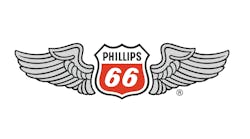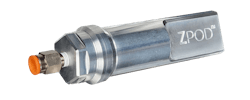The Relationship Between Compatibility and Conversion Effectiveness
To better understand the aviation industry’s key concerns and pain points related to grease, ExxonMobil asked MRO Americas attendees to submit their grease-related questions directly to the ExxonMobil team. Having collected more than 40 questions on related topics, including color, formulation, compatibility, storage, and handling, ExxonMobil has offered to share the answers in a three-part article series.
In part two of the grease series, Gary Dudley, Ph.D., global grease product technical advisor at ExxonMobil Research & Engineering Lubricants Technology, tackles questions on how technicians can identify compatible greases and shares insight for conducting grease conversions.
Q. What makes aviation greases different than other types of lubrication grease?
Although aviation and other forms of lubricating greases may share some similar ingredients, aviation greases may differ in the technology and performance attributes required to meet or exceed the aviation industry specifications.
Aviation greases undergo very high levels of scrutiny in regards to quality assurances and quality controls versus standard multipurpose greases. They also undergo extensive performance testing to assure compliance with OEM, military, and civil specification requirements. In addition, aviation grease formulations cannot substitute new additives, base oils, or thickeners without obtaining OEM, military, and civil authority endorsement. In many cases, full requalification of the grease may also be required before a change is approved.
Q. Are all greases compatible with one another?
No, not all greases are compatible, and the mixing of different greases should not be taken lightly. If incompatible greases are commingled, the intermixing can negatively impact grease performance as the resulting grease mixture will have an unknown composition and/or performance level. All greases contain base oils, thickening agents, and chemical additives that can react with each other and adversely impact the quality of the grease.
To confirm if grease formulations are compatible, operators can consult the Standard ASTM D 6185 – Standard Practice for Evaluating Compatibility of Binary Mixtures of Lubricating Greases, which is based on performance data from testing mixtures of both greases. Standard compatibility tests may consider the stability of the oil/thickener matrix by evaluating a grease’s shear stability, dropping point, storage stability, and high-temperature performance.
Most OEM, industry, and supplier recommendations suggest performing a compatibility test to assess the risk of mixing two greases. ExxonMobil Aviation has tested many combinations of greases and finds that compatibility is generally “borderline.” The normal aviation industry practice is to fully purge all old greases from any application, regardless of compatibility. This is a standard operating practice and should be followed without exception.
For more information on grease compatibility and for conversion guidance, please review the technical topic here.
Q. How do you clean grease off an application or bearing when changing grease or making a grease conversion?
A number of options exist for removing grease from your application or bearing. These can range from purging and wiping down the part to solvent washing of the part. It is generally recommended that you contact your OEM supplier to determine what would be an acceptable method to clean the application or bearing.
Q. If grease incompatibility occurs, what are some initial effects that might be noticed?
When incompatible greases are mixed together, the consistency typically becomes harder or softer than the individual greases. These consistency changes generally become more pronounced as operating temperatures and/or the rate of shearing increases.
While in operation, incompatible greases may also exhibit excessive oil separation or bleeding tendencies.
Q. If grease is contaminated with fuel, how does this impact its formulation? What else can operators do?
Fuel contamination can reduce a grease’s base oil viscosity and compromise the structural stability of its thickener, affecting its load-carrying capabilities. If grease becomes contaminated by fuel, it should be fully purged and replaced.
Coming up in AMT’s November/December issue, part three will focus on grease color and odor.




